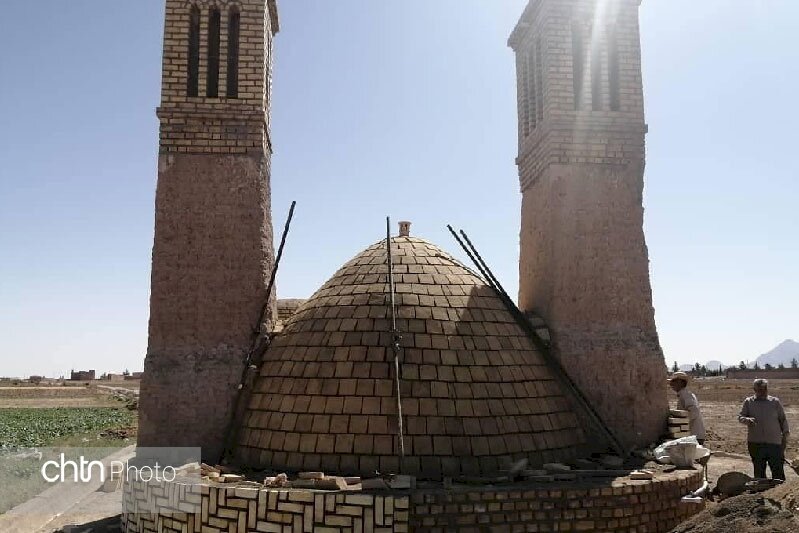Historical cistern in Na’in to gain former state

TEHRAN – A restoration project has been commenced on a historical Ab-Anbar (cistern) in the city of Na’in, the central province of Isfahan, Na’in’s tourism chief has announced.
The historical monument has suffered significant damage from natural and human factors such as drought over the past few years, Mahmud Madanian said on Tuesday.
The project involves repairing and strengthening the walls, brick dome, and tank as well as windcatchers (badgirs), the official added.
The cistern is planned to be re-used after complete restoration due to the severe lack of drinking water in the city, he noted.
The term Ab-Anbar is common throughout Iran as a designation for roofed underground water cisterns. It associates with water management systems in arid areas that are reliant on permanent springs or seasonal rainwater.
Such underground reservoirs or Ab-Anbars are parts of the iconic qanat systems, which rely on snow-fed streams flowing down from surrounding mountains.
Qanats, according to UNESCO, provide exceptional testimony to cultural traditions and civilizations in desert areas with an arid climate.
The history of Na’in dates back to nearly 2000 years, which makes it one of the oldest continuously settled towns in the Iranian plateau.
Na’in lies 170 km north of Yazd and 140 km east of Isfahan. Like much of the Iranian plateau, it has a desert climate, with a maximum temperature of 41 °C in summer, and a minimum of -9 °C in winter.
During ancient times, the city was at the junction of a desert road that connected Tabas and Mashhad, it used to be an important crossroad on converging trade routes since Sassanid times. Na’in was known for its ceramics and textiles; today it's primarily known for fine hand-knotted carpets and for hand-loomed camel-wool cloaks, which are produced in the neighboring villages.
ABU/AFM

Leave a Comment